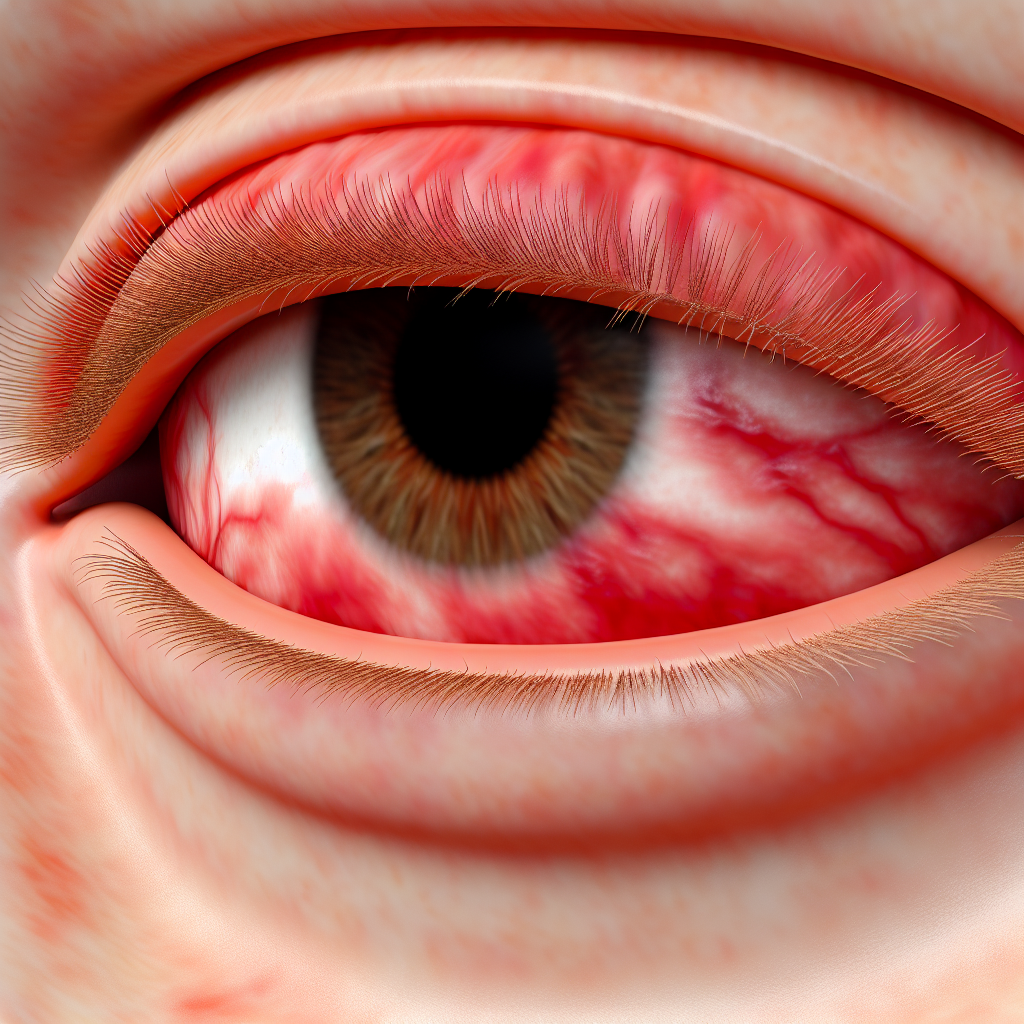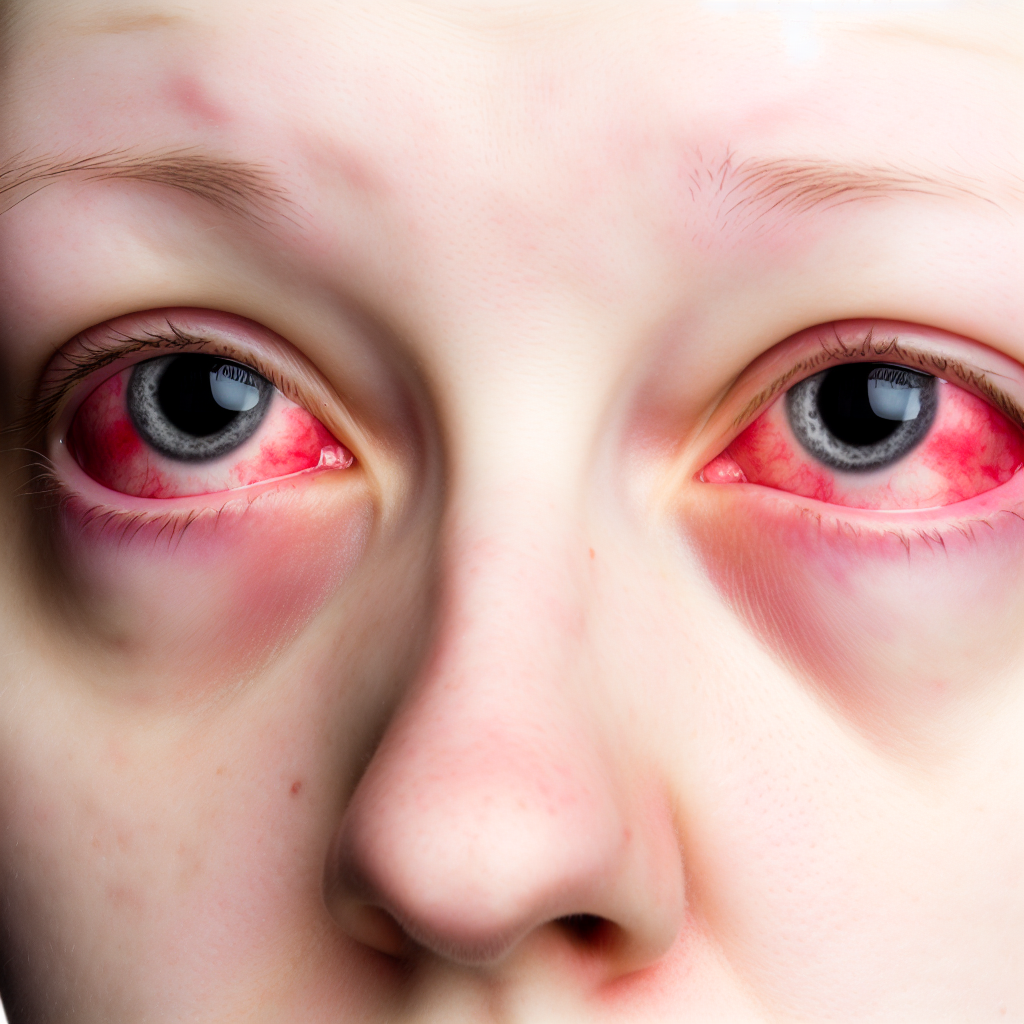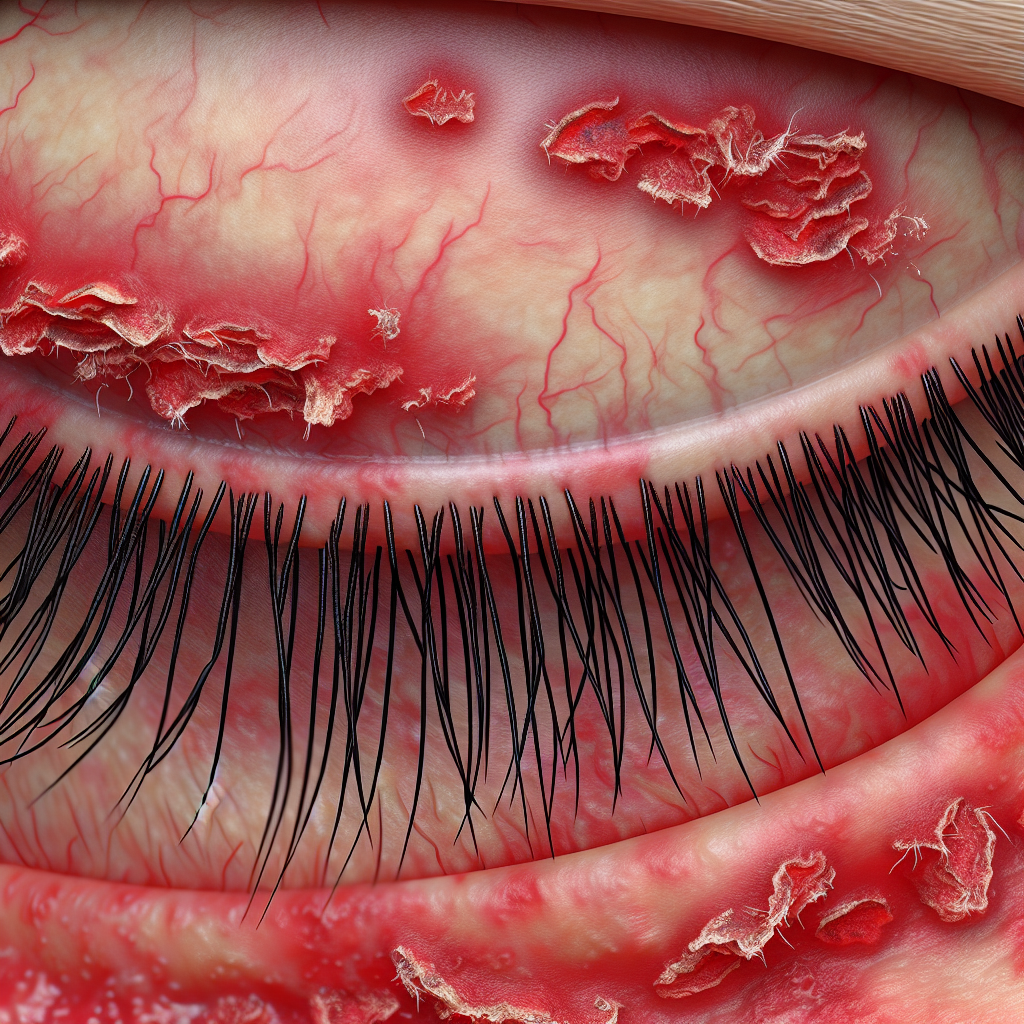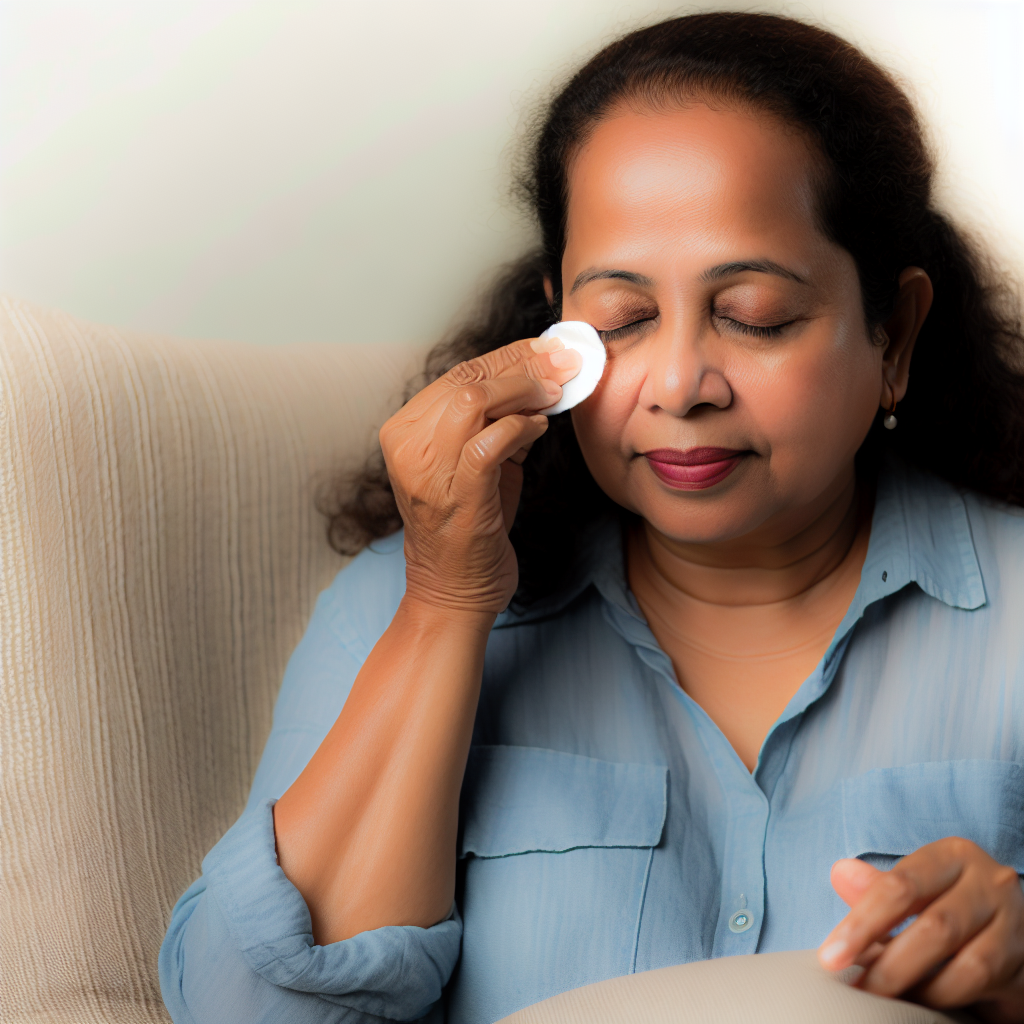Eyelid dermatitis is inflammation, redness, and itching of the eyelids caused by skin irritation, eczema, or allergic reactions. Treatment involves avoiding triggers, using topical treatments, and seeking medical attention. Tips for managing and preventing the condition include moisturizing, avoiding irritants, and consulting with a dermatologist. Keywords include eyelid dermatitis, skin irritation, eczema, and allergic reaction.
Eyelid dermatitis is a common skin condition that affects many people, causing redness, itching, and irritation around the eyes. This condition can be caused by a variety of factors, from skin irritation to allergic reactions, and can be difficult to manage if left untreated. In this article, we will discuss the causes, symptoms, and treatment options for eyelid dermatitis, as well as provide tips for preventing and managing flare-ups. Whether you are dealing with eczema or an allergic reaction, understanding the root causes of eyelid dermatitis can help you find relief and protect your skin.
1. Understanding Eyelid Dermatitis: What You Need to Know

Eyelid dermatitis is a common condition that affects many people. It can be caused by various factors, including skin irritation, eczema, and allergic reactions. The condition is characterized by inflammation of the eyelids, which can lead to redness, itching, and swelling.
Skin irritation is one of the most common causes of eyelid dermatitis. This can be caused by a variety of factors, including harsh makeup products, soaps, and other skincare products. Environmental factors like pollution and seasonal changes can also cause skin irritation, leading to eyelid dermatitis.
Eczema is another common cause of eyelid dermatitis. This is a chronic skin condition that causes red, itchy, and inflamed skin. Eczema can affect various parts of the body, including the eyelids. When eczema affects the eyelids, it can cause significant discomfort and affect a person’s quality of life.
Allergic reactions are another common cause of eyelid dermatitis. People can be allergic to various substances, including makeup, skincare products, and even certain foods. When the immune system reacts to these substances, it can cause inflammation of the eyelids, leading to the development of eyelid dermatitis.
Treatment for eyelid dermatitis typically involves identifying and avoiding the trigger that causes the condition. This may involve changing skincare products, avoiding certain foods, or taking medications to control inflammation. In addition to this, people with eyelid dermatitis may benefit from using cool compresses, moisturizers, and other topical treatments to soothe the skin and reduce inflammation.
In conclusion, eyelid dermatitis is a common condition that can cause significant discomfort and affect a person’s quality of life. Understanding the causes and symptoms of this condition is essential for effective treatment. If you experience symptoms of eyelid dermatitis, it is important to seek medical attention to determine the underlying cause and develop an appropriate treatment plan.
2. Common Causes of Eyelid Dermatitis: From Skin Irritation to Allergic Reactions

Eyelid dermatitis is a common condition that affects many people around the world. It is characterized by inflammation, redness, and itching of the eyelids. There are various causes of eyelid dermatitis, ranging from skin irritation to allergic reactions.
One of the most common causes of eyelid dermatitis is skin irritation. This can be caused by a variety of factors, including harsh soaps, cosmetics, and other personal care products. People who have sensitive skin are more prone to developing eyelid dermatitis due to skin irritation.
Another common cause of eyelid dermatitis is eczema. Eczema is a chronic skin condition that causes inflammation and itching of the skin. When it affects the eyelids, it can cause redness, swelling, and itching.
Allergic reactions are also a common cause of eyelid dermatitis. People may be allergic to a variety of substances, including pollen, animal dander, certain foods, and medications. When exposed to an allergen, the body’s immune system can produce an inflammatory response, leading to eyelid dermatitis.
In some cases, eyelid dermatitis may be caused by a combination of factors. For example, a person may have sensitive skin and also be allergic to a particular substance, which can lead to a more severe reaction.
Regardless of the cause, it is important to seek treatment for eyelid dermatitis. Treatment may involve avoiding triggers, using topical creams or ointments, and taking oral medications. In severe cases, phototherapy or other advanced treatments may be required.
In conclusion, eyelid dermatitis can be caused by a variety of factors, including skin irritation, eczema, and allergic reactions. It is important to identify the underlying cause and seek appropriate treatment to manage symptoms and prevent further complications.
3. Recognizing Symptoms of Eyelid Dermatitis: How to Identify Eczema and Other Skin Conditions

Eyelid dermatitis is a common condition that affects many people. One of the most important things to know about this condition is how to recognize its symptoms. In some cases, eyelid dermatitis can be mistaken for eczema or other skin conditions. Here’s what you need to know about identifying eyelid dermatitis and distinguishing it from other skin irritations.
One of the most common symptoms of eyelid dermatitis is redness and inflammation around the eyelids. The skin may also become dry, scaly, or flaky. In some cases, the skin may feel itchy or irritated. Additionally, some people may experience a burning sensation or feel like they have something in their eye.
It’s important to note that these symptoms can also be caused by other skin conditions, such as eczema. Eczema is a chronic skin condition that causes red, itchy patches of skin. It can occur anywhere on the body, including the eyelids. However, eczema is usually more severe and long-lasting than eyelid dermatitis.
Another possible cause of eyelid dermatitis is an allergic reaction. If you’re experiencing symptoms around your eyes, think about whether you’ve recently come into contact with any potential allergens. This could include things like makeup or skincare products, as well as pollen or certain foods.
In some cases, eyelid dermatitis can also be caused by irritants, such as harsh soaps or detergents. If you’re experiencing symptoms, try to think about whether you’ve recently changed any of your personal care products. This can help you narrow down the potential causes of your skin irritation.
Overall, recognizing the symptoms of eyelid dermatitis is an important step in getting the right treatment. If you’re experiencing any of the symptoms mentioned above, it’s a good idea to see a dermatologist or other healthcare provider. They can help you determine the cause of your skin irritation and recommend the best course of treatment. With the right care, you can manage eyelid dermatitis and keep your skin healthy and comfortable.
4. Treating Eyelid Dermatitis: Tips and Strategies for Managing Skin Irritation and Allergies

Treating Eyelid Dermatitis: Tips and Strategies for Managing Skin Irritation and Allergies
If you are experiencing eyelid dermatitis, you may be wondering how to manage the skin irritation and allergies that come with it. Fortunately, there are several tips and strategies you can use to help ease your symptoms.
1. Identify and Avoid Triggers
The first step in managing eyelid dermatitis is identifying and avoiding triggers that may be causing your skin irritation or allergic reaction. This may involve keeping a diary of your symptoms and the products you use, as well as avoiding common irritants such as fragrances, preservatives, and certain types of makeup.
2. Keep Your Skin Moisturized
Keeping your skin moisturized is key to managing eyelid dermatitis. Dry skin can worsen symptoms and make your skin more susceptible to irritation. Look for a gentle, fragrance-free moisturizer and apply it regularly to your eyelids.
3. Use Medications as Directed
If your eyelid dermatitis is severe or does not improve with self-care measures, your doctor may prescribe medications such as topical corticosteroids or immunomodulators. It is important to use these medications as directed and not to stop them abruptly, as this can cause a rebound effect and worsen symptoms.
4. Practice Good Eyelid Hygiene
Practicing good eyelid hygiene can also help manage eyelid dermatitis. This includes gently washing your eyelids with a mild, fragrance-free cleanser and avoiding rubbing or scratching your eyes.
In conclusion, managing eyelid dermatitis involves identifying and avoiding triggers, keeping your skin moisturized, using medications as directed, and practicing good eyelid hygiene. With these tips and strategies, you can help ease your symptoms and improve your quality of life.
5. Prevention and Management of Eyelid Dermatitis: How to Protect Your Skin and Avoid Flare-Ups

Prevention and Management of Eyelid Dermatitis: How to Protect Your Skin and Avoid Flare-Ups
Eyelid dermatitis can be a frustrating and uncomfortable condition to deal with. Fortunately, there are steps you can take to prevent and manage flare-ups. Here are some tips:
1. Avoid triggers: The first step in preventing eyelid dermatitis is to identify and avoid triggers. Common triggers include cosmetics, fragrances, certain foods, and environmental allergens. Pay attention to what products or substances you come into contact with and try to avoid those that seem to cause irritation.
2. Keep your skin moisturized: Dry skin can lead to irritation and inflammation. Use a gentle, fragrance-free moisturizer on your eyelids and other affected areas to keep your skin hydrated and healthy.
3. Be gentle when washing your face: Use a gentle, fragrance-free cleanser to wash your face and be careful not to scrub too hard. Rinse thoroughly and pat your skin dry with a clean towel.
4. Choose the right cosmetics: If you have eyelid dermatitis, it is important to choose cosmetics that are gentle and fragrance-free. Look for products that are labeled as hypoallergenic or non-comedogenic.
5. Consult with a dermatologist: If you are struggling to manage your eyelid dermatitis, it may be time to consult with a dermatologist. They can help you identify triggers and develop a treatment plan that works for you.
In summary, eyelid dermatitis can be a frustrating condition, but there are steps you can take to prevent and manage flare-ups. By avoiding triggers, keeping your skin moisturized, being gentle when washing your face, choosing the right cosmetics, and consulting with a dermatologist when needed, you can protect your skin and avoid skin irritation and eczema caused by an allergic reaction.
In conclusion, eyelid dermatitis can be a frustrating and uncomfortable condition to deal with. It can be caused by a variety of factors, including skin irritation, eczema, and allergic reactions. However, there are several treatment options available to help manage the symptoms, such as using gentle skincare products and avoiding triggers. It is also important to take preventative measures, such as protecting your skin and avoiding known irritants. If you are experiencing symptoms of eyelid dermatitis, it is important to consult with a dermatologist to determine the underlying cause and develop a personalized treatment plan. With the right care and management, you can find relief from this condition and maintain healthy, comfortable skin around your eyes.
